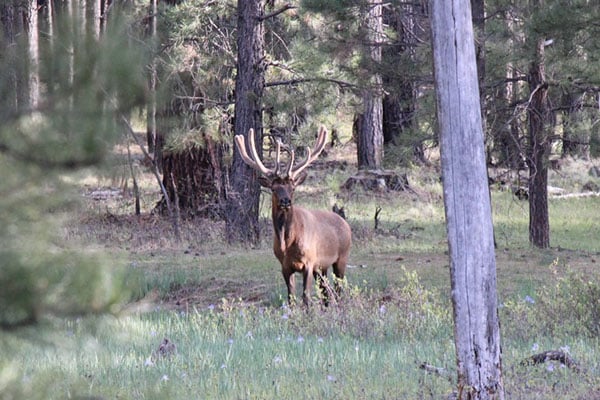
Last Updated on
By Tony Martins
The majestic Rocky Mountain elk is truly a North American icon. If you have never experienced the powerful whistling, growling “bugle” and courtship behavior of a love-sick bull you have missed one of the true wonders of nature. European explorers named these large deer “elk” as their size was more reminiscent of the moose – referred to as elk in their homelands – than the smaller European red deer. The common name “wapiti” is derived from the Shawnee and Cree word that means “white rump.” These animals have played important cultural and spiritual roles in the history of Native American peoples, dating back thousands of years as evidenced by petroglyphs carved into cliffs by Anasazi in the American Southwest. Today, they rank among the most sought-after big game species in the world.
Elk inhabited most of North America 200 years ago, but agricultural development resulting in habitat destruction and unregulated market hunting in the late 19th and early 20th centuries eliminated them from the eastern two-thirds of the United States. From an estimated population peak of more than 10 million, only about 90,000 elk remained by 1922, with about half of these residing in Yellowstone National Park. Thankfully, the ruggedness of western topography and the comparative remoteness of its elk habitat provided a safe haven from wholesale hunting for the Rocky Mountain subspecies.
Today elk numbers are approaching 1 million, primarily populating 10 western states and two Canadian provinces. Colorado, Montana, Idaho, Oregon, Wyoming, Washington, Arizona, Utah, New Mexico and Nevada in the US, and British Columbia and Alberta in Canada all support substantial elk herds, providing more elk hunting opportunities than ever before. Interest in elk and elk hunting, supported by conservation organizations like the Rocky Mountain Elk Foundation, has been a driving force behind the successful reintroduction of the Rocky Mountain elk to much of the historic range of extinct subspecies, like the Eastern and Merrian’s elk. Wisconsin, Michigan, Minnesota, Missouri, Arkansas, Kentucky, Tennessee, Pennsylvania, Virginia, North Carolina, and Saskatchewan all support reintroduced elk populations today.
Habitat, Forage and Movement
Although they can be found in a variety of habitats, from open alpine meadows to dense rainforests, and semi-arid deserts to deciduous woodlands, they prefer the mountainous terrain and higher elevations of their typical summer range. As a rule, this will be within a half mile of water, available for daily use. They thrive from 7,000 feet in the mixed conifers, to 12,000 feet in the spruce-fir-aspen sub-alpine and alpine belts, moving up as the weather warms and remaining until winter snows force them lower. When deep snow makes feeding difficult, cows and young bulls will move down to south-facing slopes with little snow. Adult bulls remain higher, moving down only when snow depth hinders daily movement.

Elk migrate up to 100 miles between summer and winter ranges, using the same routes each year. Migrating elk walk at a speed of 8 mph, and can trot 10-20 mph for long periods, enabling them to cover great distances. Availability of suitable winter range with adequate forage, typically at elevations from 5000 to 7000 feet, is the limiting factor for elk populations. In early spring, elk move back to higher elevation, working their way toward north-facing sun-shaded slopes where they can stay cool while searching for a good supply of emergent grasses and forbs for sustenance. Grasses, such as brome, wheat grass, blue grama grass and June grass, and forbs such as ragweed, geranium, clover and dandelion are summertime favorites. In the fall, their diet will include mast crops like acorns, pinyon nuts and juniper berries. In winter, elk browse shrubs and trees like willow, bitterbrush, balsam, dogwood, aspen and poplar, munching twigs and woody bark. When undisturbed, elk feed heavily from first light until late morning before bedding nearby to rest and chew their cud. Elk also feed in late afternoon, but when pressured they will typically feed after dark and then move to steep slopes to bed.
Social Interaction and Breeding Behavior
Cows, calves, yearlings and immature bulls live in loosely formed herds year-round for protection from predators, while mature bulls live in small bachelor groups, or alone. In late summer bulls strip their velvet and begin gathering cows and calves into small “harem” groups. Bulls bugle and rub trees and shrubs with their antlers, not only to attract cows and intimidate rival bulls, but also to strengthen their necks for the rigors of battle. They also scrape the ground with their antlers, urinate in the scrape and then wallow in the resulting mud coating their bodies. Stinky bulls convey their amorous intentions in this manner to cows attracted by the scent.
Breeding occurs in the fall when cows in the harem begin to cycle. Dominant “herd” bulls will guard their harems of up to 30 cows from other bulls aggressively, and violent competitive battles often break out. The elk woods are typically alive with vocalizations at this time, as elk are surely the noisiest deer species. Herd bulls sound-off with bugles of contentment while tending their harems. When competition arises, the calling changes to a powerful “challenge” bugle to warn potential rivals. The sound begins with a low-pitched bellow, progresses to a shrill high-pitched whistle, and often terminates in a short inhale/exhale sequence called a “chuckle.” This is the time when elk hunters want to be in the woods, with hopes of calling-in a rut-crazed, giant antlered monarch.
After gestation of about 250 days (8+ months) calves are born from late May through June. Just prior to birthing, the cow will chase away her calf from the previous year and search for a secluded spot. The cow will lick her newborn calf clean and consume the afterbirth and within hours, relocate to a safer place away from the birthing spot where the calf will remain hidden for a couple of weeks. During this time calves are untended for long periods of time, with the cow returning periodically to nurse. Calves have little scent, and are camouflaged with white spots on the back and sides of their russet colored coats that soon shed out. When the calf is strong enough to run (2+ weeks of age), the cow and calf will join others forming a nursery band. Cows recognize the voices of their calves, and communicate with various chirps, mews and squeals, as well as barks that warn of danger. Cow elk will defend their young against predators vigorously, and have been known to ward off attacks by grizzly bears.
Hunting Tactics
Elk are hunted – somewhere – from late August through January. Although a variety of hunting tactics are used to take elk, the hunting method often depends on the specific time and location of the hunt, as well as the weapon used. Nevertheless, three basic methods account for the majority of all elk tags filled: (1) spot-and-stalk, (2) ambush, and (3) calling. The spot-and-stalk approach keys on predictable elk movement. Hunters typically climb to an elevated lookout position before daylight, then search with binoculars as the landscape brightens. Elk typically leave feeding areas in the early morning hours and travel to daytime bedding areas that are often at higher elevation. This predictable movement often holds for the reverse trek – when elk leave elevated bedding areas, moving downhill to feed in late afternoon. The stalking part of this method is usually most effective when elk have bedded to ruminate after feeding. The ambush method is closely related, also taking advantage of predictable movement patterns. Hunters find good success by waiting in ambush downwind from the anticipated path of travel. When the temperature is warm, elk will go to water one or more times each day, and this provides excellent opportunity for ambush. As breeding time approaches, well used wallows make excellent points of ambush.
The classic elk hunting method is calling. Most elk hunters dream of calling a hormone-crazed bull to the bow or gun. This method works best far off the beaten path, where elk are not pressured. Despite the fact that manufactured elk calls mimic live animals remarkably well, elk have become call shy – particularly to the bugle – in many heavily hunted areas. Experts agree that knowing when and when to not call are equally important for success. Calling with a selection of high-pitched cow calls or calf bleats can be more effective than bugling where elk are pressured. Cow elk will often come to a calf bleat, even with their calf of the year standing at their side! Cow calls are also effective for covering noisy mistakes hunters make while moving in the elk woods.
Hunting Equipment
The importance of high quality binoculars when elk hunting cannot be overstated. Good binoculars minimize eye strain and the potential for headache during prolonged glassing. They also gather more light for clarity during low-light conditions, when elk are usually most active. A rifle (or bow) that shoots accurately and carries comfortably ranks high on the necessary equipment list. Rifle calibers from .243 Winchester to .338 Winchester Magnum, and bows with at least 50 lb. draw weight shooting cut-on-contact broadheads are commonly used to take elk. Sturdy boots with ankle and arch support that can be worn comfortably all day in uneven terrain are another important piece of equipment that should be given due consideration by the elk hunter.
Fun Facts About Elk
- A large set of elk antlers can weigh as much as 40 lbs. and can grow more than one inch a day in summer.
- Antlers are cast by mature bulls in January through March, and as late as May by juvenile bulls. Shed antlers are sought by collectors and craftsmen, and can bring as much as $12.00/pound.
- Elk canine teeth called “ivory” have been prized for centuries for jewelry and other ornamentation. They are thought to be remnants of the fighting tusks of elk ancestors.
- Elk can sprint up to 45 mph for short distances – faster than a race horse!
- Mature bull elk can weigh over 1000 lbs. and can jump 8 feet high.
- Elk can live 14-16 years in the wild, although 25-year old individuals have been documented.
- Despite the racket they make in the woods, they can distinguish the sound of walking elk from other animals.
- Natural elk predators include wolves, cougars, brown bears and black bears.

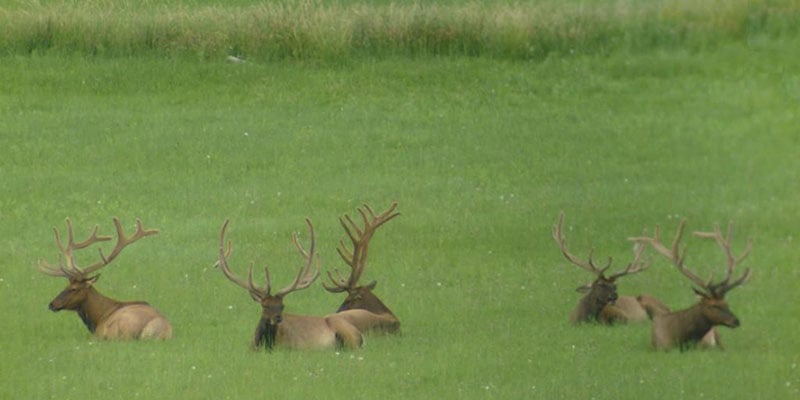
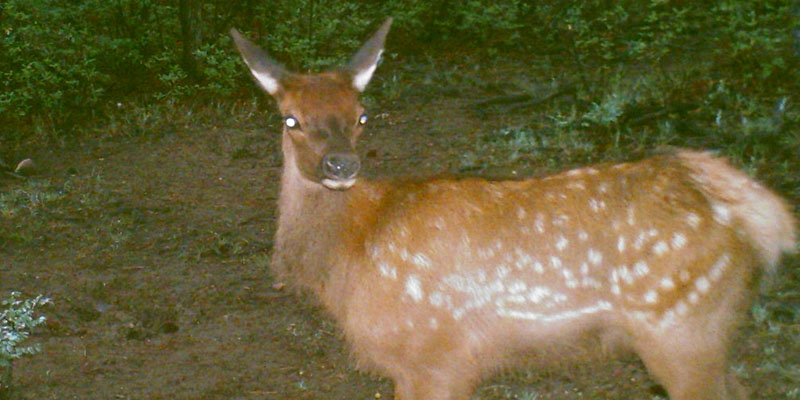
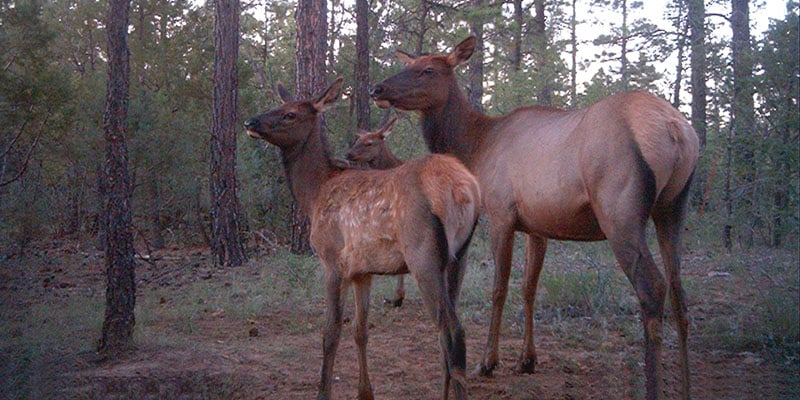


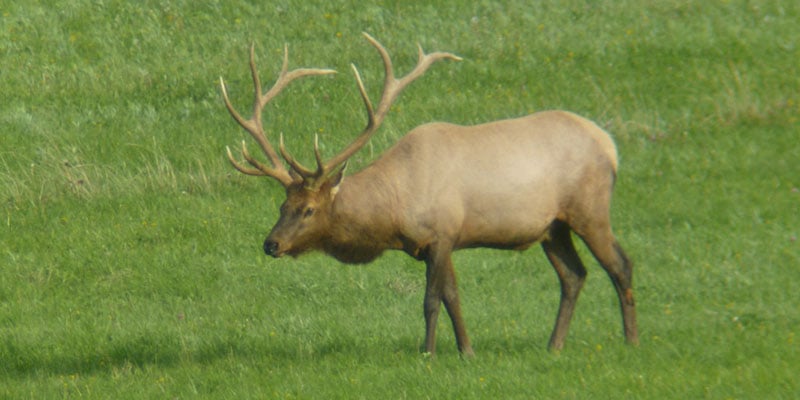



Leave a Reply